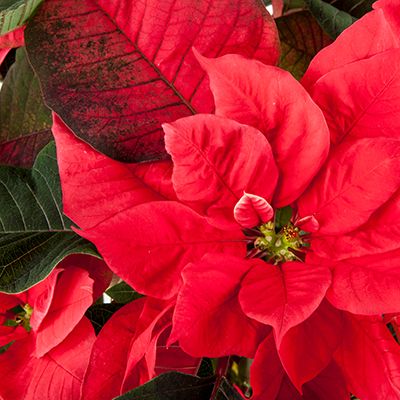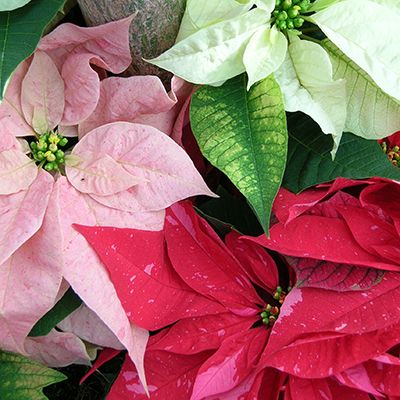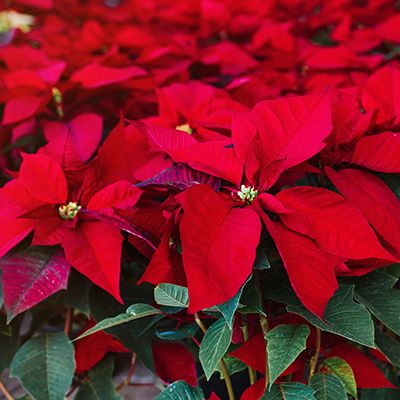


Poinsettia Care
Our first ambassador to Mexico, J.R. Poinsett, was fascinated by the “Christmas flowers” he saw growing wild. He brought some back to the U.S., in 1828, where they have been propagated and hybridized ever since. The common name was changed to Poinsettia to honor Poinsett’s discovery.
The poinsettia (Euphorbia pulcherrima) is a short day plant, which means it won’t bloom until the days get short enough to provide 14 hours of darkness. The pretty red “flowers” are special leaves called bracts. The plant is not poisonous, but a few people may be allergic to the white sap.
When you bring your poinsettia home, remember that it was raised in and has spent all but its last few days in a greenhouse. It is a living plant and although indoors in the family home or office is not the most ideal environment, there are steps you can take to prolong its beauty:
- Try to place the plant in a place where it will get six or more hours of indirect sunlight each day and then move it to its best looking place when company comes.
- Keep the plant in a cool room but not near any cold drafts, hot air registers or the fireplace.
- Water the plant when the soil surface is dry or the pot’s weight is light. Water in the sink until water runs out the bottom, leave in the sink until it has completely drained.
- Don’t fertilize your poinsettia.
- Transport and move your plant carefully because the branches are brittle. Have a second person hold the plant when you take it home or put it into a large box so it won’t bump the inside of the vehicle.
- Excessive heat and lack of light are the two greatest enemies of your poinsettia plant. It should last two to three weeks before it starts dropping leaves.
When your poinsettia plant has come to the end of its holiday season, you have two choices: the dumpster or growing it on. Poinsettias have been grown successfully out doors at least as far north as San Mateo. In one instance it was grown like a hydrangea bush and the owner would harvest an arm load of blooms each holiday season. In another instance the plant was growing next to the house, had a five inch trunk and finally was cut down because it was pushing against one of the eaves.
- Poinsettias have to be located in a place that will never get any frost.
- When the plant has finished blooming, move it out onto a porch or other frost-free area which receives filtered or morning sun.
- Water the plant when the soil is dry until it perks up and starts to show a bit of new growth.
- At this time, cut it back to about six or eight inches tall (each of the stems) and re-pot into a slightly larger pot with Master Nursery® Gardener’s Gold Potting Soil.
- It is about April by now so move the poinsettia into a place where it gets half a day or slightly more sun (no middle of the day heat). Water as you would any potted plant and fertilize monthly with Master Nursery® Rose and Flower Food.
- When the plant has doubled its growth, pinch back one-third to one-half of the new growth to force more branches.
- Continue this care until about the first of October and then move the plant to a place where it will receive absolutely no artificial light between sundown and sunrise; not even for 3 or fewer seconds. (No streetlights, porch lights, car headlights, kitchen lights, no nothing lights! If you haven’t got such a place, put a big, light-tight cardboard box over the plant from 5:00 p.m. to 7:00 a.m. or longer, but not during the day. It needs six to eight hours of sun per day. Using the box method, blooming is possible in June or July.
- Continue watering and fertilizing as usual.
- On one occasion, when the poinsettia was pinched twice (June and August), a plant was produced with about 15 small flowers (three inches in diameter).
- When the plant is as you want it, bring it indoors and treat as described above.